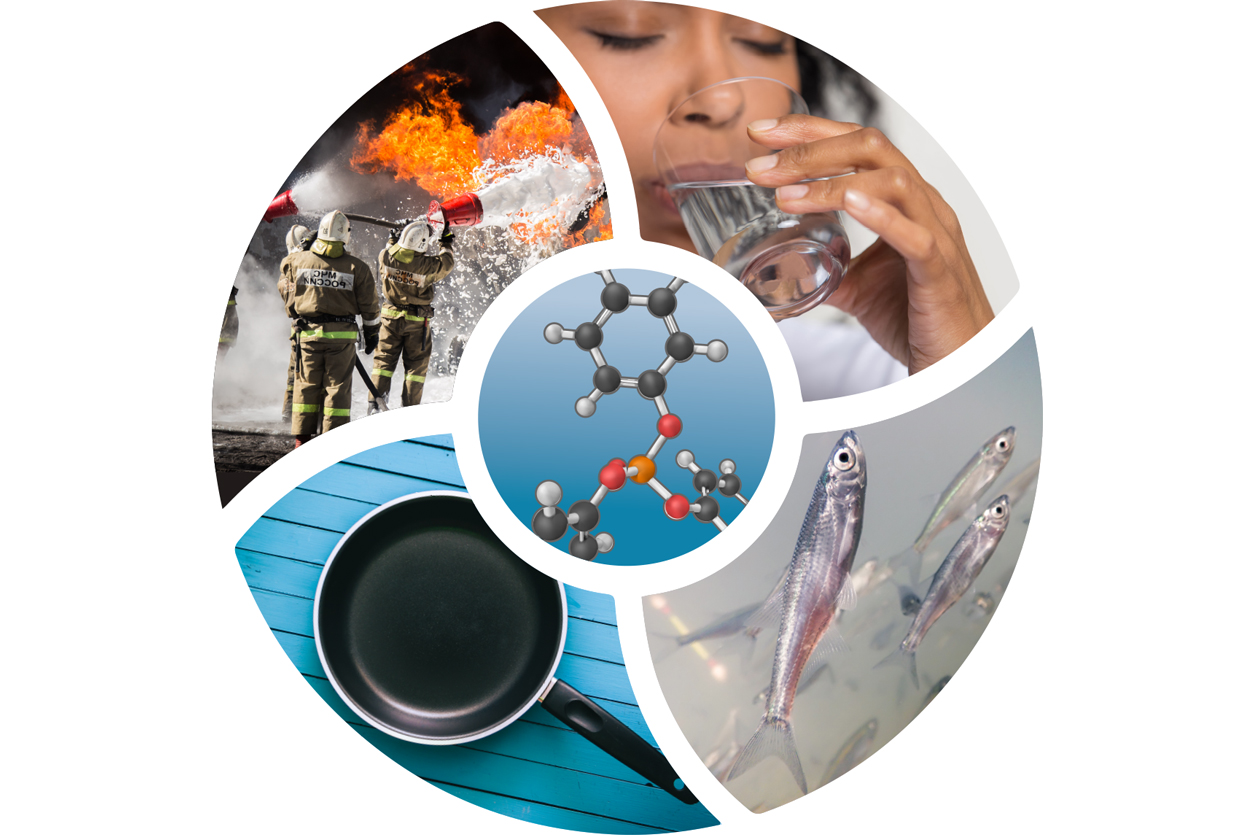A large-scale study on exposure to per- and polyfluoroalkyl substances (PFAS) in humans and rodents showed consistent evidence of chemical-driven liver damage, according to NIEHS grantee Lida Chatzi, M.D., Ph.D., from the University of Southern California (USC) Keck School of Medicine. She presented her findings during a Sept. 14 webinar hosted by the Collaborative on Health and the Environment (CHE).
 Chatzi’s research focuses on nutrition and chemical exposures during pregnancy and early childhood. She has published numerous studies focused on endocrine-disrupting chemicals and their effects on metabolism and obesity in children. (Photo courtesy of Andrew Zaw / USC)
Chatzi’s research focuses on nutrition and chemical exposures during pregnancy and early childhood. She has published numerous studies focused on endocrine-disrupting chemicals and their effects on metabolism and obesity in children. (Photo courtesy of Andrew Zaw / USC)PFAS are synthetic chemicals widely used in industry and consumer products such as stain-resistant fabric, fire retardants, cosmetics, and food packaging. Because of widespread exposure, PFAS have been detected in the serum of nearly all U.S. adults. They are known to accumulate in body tissues, such as in the liver, which poses risk to long-term human health. There is a growing body of evidence demonstrating that PFAS promote metabolic changes and disrupt liver homeostasis.
PFAS exposure, liver health
Chatzi’s group conducted the first systematic review and meta-analysis of scientific literature on exposure to PFAS and markers of liver injury. The research — published in the journal Environmental Health Perspectives — drew from 86 rodent studies and 25 human studies.
The review of rodent studies linked markers of liver injury with exposure to several PFAS. The meta-analysis of human studies provided convincing evidence that exposure to the substances is associated with higher levels of liver enzyme, which indicates liver injury. The combined results from both experimental and human studies demonstrates the strength of the evidence that PFAS exposure contributes to liver disease, this fast-growing epidemic, Chatzi said.
Urgent public health problem
In the United States, nonalcoholic fatty liver disease is a fast-growing epidemic that affects 80 million people, including two in every 10 children and young adults in the U.S., noted Chatzi. Risk factors such as sedentary lifestyle, genetics, and diet cannot fully explain the current epidemic, leading researchers to investigate environmental exposures.
Emerging evidence from human and animal studies suggests that exposure to endocrine-disrupting chemicals such as PFAS can result in what researchers call toxicant-associated fatty liver disease, she told participants.

“Given the high prevalence of PFAS exposures in the population and the link to liver damage, it is important to evaluate whether these compounds are involved in initiating liver disease,” Chatzi said. “To address this urgent public health problem, we need solution-oriented approaches that integrate human research, experimental studies, and novel data science and implementation strategies. The goal is to inform evidence-based prevention approaches.”
Everywhere in the environment
PFAS have been used for the last six decades in everything from water-repellent textiles to nonstick coatings and food packaging products, according to Chatzi. Because of their strong carbon-fluorine bonds, some of the substances do not break down easily in the environment or our bodies. She noted that PFAS can be detected in more than 98% of U.S. adults.
“It’s a huge public health concern,” said Chatzi.
Emerging PFAS replacements, designed to be less persistent in the environment, are largely unregulated and have not been evaluated for human health effects, she noted. Chatzi added that many known and potential sources of PFAS contamination are near low-income neighborhoods and communities of color, and some research has shown that people who live in those areas have higher levels of PFAS in their bodies compared with nonresidents.
Chatzi’s full presentation is available here.
Citation: Costello E, Rock S, Stratakis N, Eckel SP, Walker DI, Valvi D, Cserbik D, Jenkins T, Xanthakos SA, Kohli R, Sisley S, Vasiliou V, La Merrill MA, Rosen H, Conti DV, McConnell R, Chatzi L. 2022. Exposure to per- and polyfluoroalkyl substances and markers of liver injury: a systematic review and meta-analysis. Environ Health Perspect 130(4):46001.
(Susan Cosier is a contract writer in the NIEHS Office of Communications and Public Liaison.)









